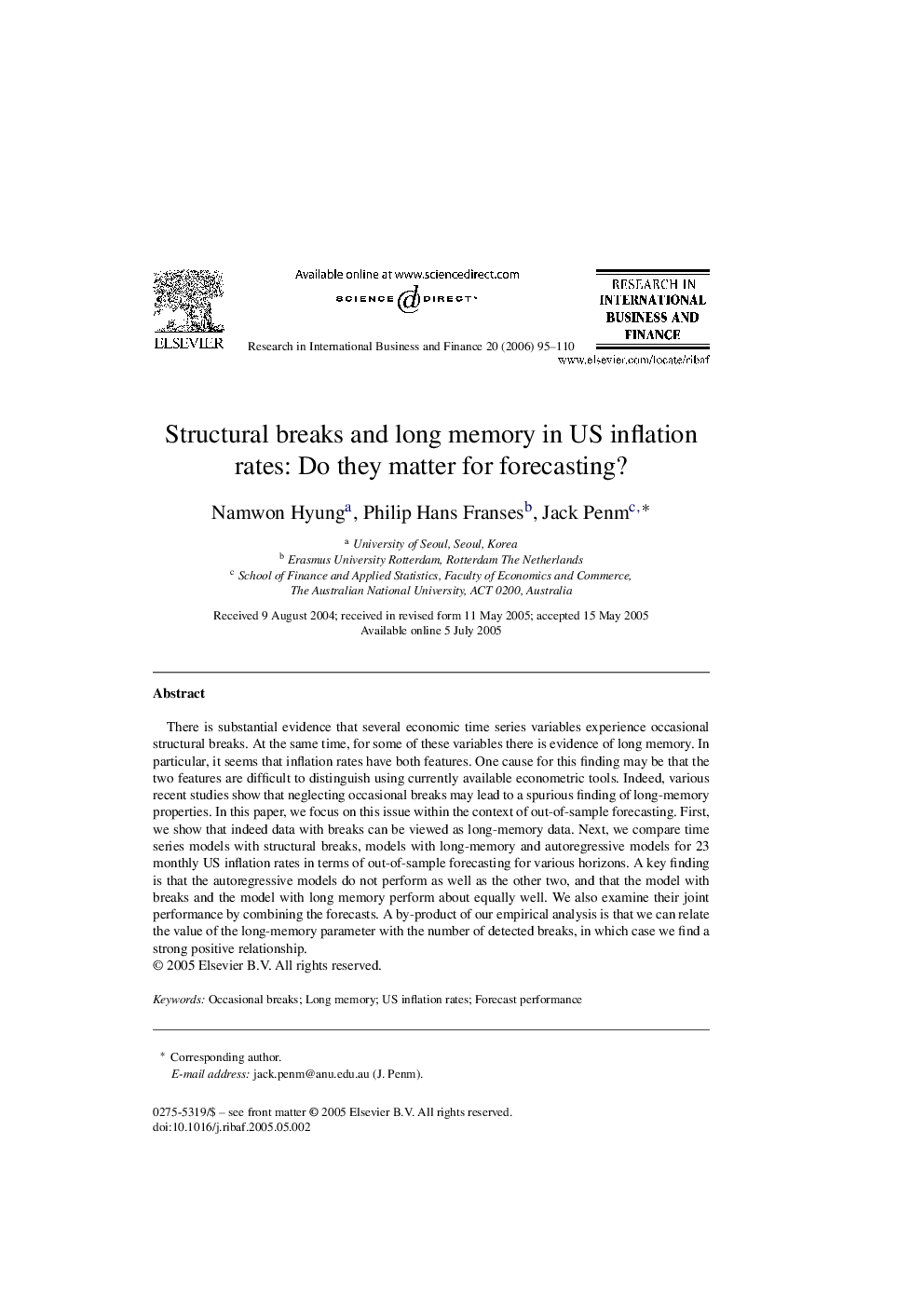| Article ID | Journal | Published Year | Pages | File Type |
|---|---|---|---|---|
| 1003280 | Research in International Business and Finance | 2006 | 16 Pages |
There is substantial evidence that several economic time series variables experience occasional structural breaks. At the same time, for some of these variables there is evidence of long memory. In particular, it seems that inflation rates have both features. One cause for this finding may be that the two features are difficult to distinguish using currently available econometric tools. Indeed, various recent studies show that neglecting occasional breaks may lead to a spurious finding of long-memory properties. In this paper, we focus on this issue within the context of out-of-sample forecasting. First, we show that indeed data with breaks can be viewed as long-memory data. Next, we compare time series models with structural breaks, models with long-memory and autoregressive models for 23 monthly US inflation rates in terms of out-of-sample forecasting for various horizons. A key finding is that the autoregressive models do not perform as well as the other two, and that the model with breaks and the model with long memory perform about equally well. We also examine their joint performance by combining the forecasts. A by-product of our empirical analysis is that we can relate the value of the long-memory parameter with the number of detected breaks, in which case we find a strong positive relationship.
